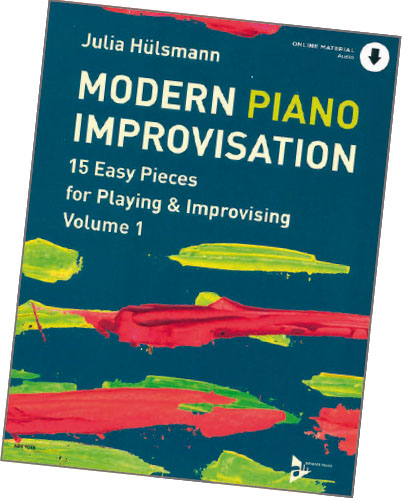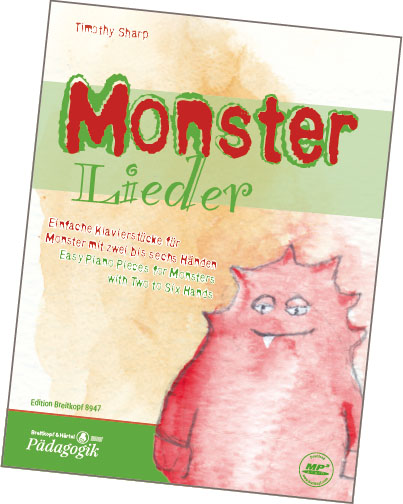
Leonard Bernstein: Selected anniversaries for piano
I've had my first online piano lesson, courtesy of the new edition of Bernstein's Anniversaries. The Anniversaries idea is one which followed Bernstein throughout his working life. The first set, Four Anniversaries, was written when the composer was 29, while the last set was penned just two years before his death in 1990. This collection draws on all four sets of miniatures, reproducing 16 out of the 29 in one easy to manage edition.
To accompany the collection, editor Michael Mizrahi provides 11 short video lessons, discussing the various techniques involved in each Anniversary. For philomaths out there, some of these techniques are applicable to multiple pieces.
The first thing to point out is that the Anniversaries are not easy pieces – I would not assign these to any students who are below Grade 8. Given the subject matter, it's not surprising that this is Bernstein at his most angular and avant garde, and I sat down at my piano and a sense of excitement – I don't get a chance for much self-development these days.
The videos play for between two and four minutes each. For the most part, they draw out the main characteristics of each piece, focussing on orchestral colour, rhythm and pulse, pedalling, and fingering. There are some useful insights, drawn from Mizrahi's own study in the American piano tradition. In ‘For Lukas Foss’, Mizrahi adds some judicious pedalling suggestions, discussing the composer's own approach to playing.
The last six videos focus on individual anniversaries. This is where Mizrahi's academic practice really shines through. He is able to offer some useful insights into not only the performance tradition, but the historical and biographical details leading to each composition. The publication also includes extensive performance notes. I was pleased that these did not simply replicate the material covered in the online lessons.
Does this set-up make the piano teacher redundant? Of course not, but it does raise some interesting points about our own professional development. Although I still make time for an occasional piano lesson, and encourage my students to record themselves, I rarely make much time for myself. Following Mizrahi's videos, I recorded myself playing through this collection, and was surprised at how pertinent and relevant his points were to my own performance.
This edition will save the performer a lot of research time and leg work. As new editions of classic repertoire become rarer, this is a brilliant way of bringing long forgotten works back onto the editorial list.

Modern Piano Improvisation: 15 easy pieces for playing and improvising – Volume 1
Can improvisation be taught? If you're reading this publication, you're probably of the opinion that the answer to that question is yes. That doesn't mean that it's the easiest process, or that we're not all occasionally (frequently!) guilty of skipping over it in the all-consuming quest for exam distinctions. Nonetheless, improvisation is one of those skills, like singing a melody line or clapping a rhythm, which doesn't come easily to every student.
Julia Hülsmann may have less self-conscious students than I do or, given her formidable reputation as a performer, may just brook no resistance! Confession time – I learned jazz piano as a classically trained adult. At that point in my life, I was able to handle the onslaught of chord and scale-theory full-on. Hülsmann's discography was one of my go-to sources for inspiration at that point (and frequently still is), so I was delighted to see this first volume of Modern Piano Improvisation released by Schott Music.
I was interested to see how Hülsmann would unlock the world of improvisation for young players without getting bogged down in harmony and theory. Unsuprisingly, she does so effortlessly.
This first volume in the series is aimed at players ‘of all ages who have already mastered the basics and now wish to be set free’. And set us free Hülsmann does, via 15 jazz- and pop-flavoured pieces, which focus on different aspects of improvisation.
The book opens with a two-stage tutorial on the art of improvisation: ‘How to create a motif?’ And ‘How to turn a motif into an improvisation?’ Each stage is broken down into several steps, with clear musical examples. Having sat through endless meandering solos in my own jazz teaching, these six pages made my heart leap. This is possibly the clearest and most succinct explanation of how to construct a solo I've ever seen in print.
The first piece, ‘Blue Corner’, opens with a sultry head before giving students three notes to play with for the solo. The interest comes from the rhythmic variation demanded of the player. ‘Autumn Dreams’, a meditation on the standard ‘Autumn Leaves’ builds on this idea, adding sequences to the improviser's arsenal. Jazz chord symbols are unobtrusively introduced throughout the book allowing students to absorb them without becoming overwhelmed.
The online accompanying tracks add an extra dimension to the book. In addition to the usual demonstration tracks (beautifully recorded by Hülsmann herself) the pack contains accompanying tracks for each of the solo sections.
It's a difficult subject to tackle, especially in print; too much harmonic complexity or intricate accompanying pattern could distract students; too little variety will not inspire students to dive into the world of soloing. Hülsmann strikes the balance perfectly. We can only hope that there isn't a long wait for Volume 2.

Monster Lieder: Easy piano pieces for monsters with two to six hands
Timothy Sharp's Monster Lieder is just fun! On opening the review copy I thought that one of the editors at Breitkopf had gotten a bit careless with their coffee, before realising that the colourful smudges and splodges were all part of Alexander Lorenz's funky monster-design. Monster is the answer to those beautifully designed piano tutors which we all grew up with (admit it – you also had the one with the butterflies and frogs), reimagined for messy post-millennials. Other than the quirky illustrations, the typeface is bold and beautiful and the paper quality looks reassuringly like I could add a few of my own coffee splashes without worrying too much.
This is a book that will last the several years that the progressively arranged musical material encompasses. About half of the pieces come complete with lyrics (in German) for young pianist-monsters to sing along to. The authors cleverly include an English summary of the lyrics in the back, for non-polyglots, and I had great fun with one young student, inventing translations to fit (embedding modern languages? Tick!).
What really excited me about this publication was the number of carefully spaced duets (and even one trio). I, for one, gave up on duet playing way too early in my teaching, so was really happy to see some advanced duets alongside the usual five-finger fare.
Other than the German song text, all of the instructional text is presented bilingually, and for a rare treat, you can download MP3s of the composer singing the monster songs! The quirky musical language and stunning design will have students returning for many years.








